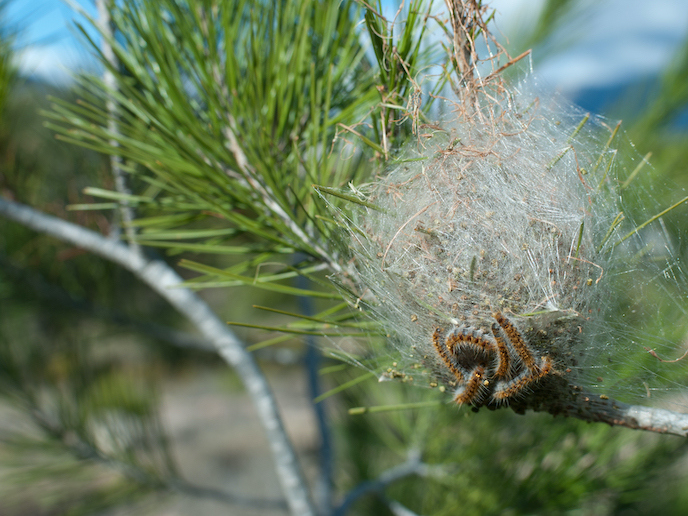Drone-based pest control system protects Europe’s trees
Climate change is introducing problematic insect pests into parts of Europe’s forests that were too hostile for them previously. One example is the pine processionary caterpillar (PPC) which feeds on the conifer needles of pines and can cause defoliation over time. This compromises the viability of the tree saplings. It also reduces the tree’s resilience against threats such as forest fires, droughts and other pests. Additionally, the stinging hairs of these insects pose a health threat to humans and animals. The EU-supported FitoStinger project has developed an automated pest control drone service especially designed for the eradication of PPC, amongst other pests, without harming the environment or local biodiversity. EU funding enabled the team to complete a business plan, including an international market study, with initial tests yielding promising results. “We are proud to have realised an idea that at first seemed crazy. The first time the machine vision identified nests and the system punctured them was such an adrenaline rush,” says Toni Caballero, CEO of FitoStinger and project coordinator. The current COVID-19 crisis has resulted in the team adapting the technology’s effective capacity for disinfection to respond to the needs of sectors such as food, health and tourism.
State-of-the-art technology
The FitoStinger autonomous drones combine various image, sound, GNSS positioning, atmospheric pressure and motion sensors with artificial vision algorithms to distinguish and detect pests and their nests. An advanced processing unit analyses the images in real time to enable this identification and subsequent targeting. Once detected, a patented lance-like applicator injects a plant-protecting agent directly into the nest, ensuring targeted extermination without harming the surrounding area and its biodiversity. The drones enable easy access to nests at all tree heights. After the system has been calibrated to identify its targets, it can be further trained for even more precision by locating it in different environments, with different quantities and types of pests. To date, the team have performed tests on treatment effectiveness and timings, puncture efficiency and nest detection accuracy. They have also tested aircraft stability. “We were pleased with the performance of the detection algorithms, even in environments that are complicated for sensors. The system successfully eliminated all pests from the nests, puncturing in a controlled and precise manner, without affecting surrounding species. Crucially, we achieved the right balance between the operation of the applicator arm and the stability of the drone,” explains Caballero.
Protecting the environment
As the plant-protection agent is highly targeted, FitoStinger only uses a small proportion of all the pesticides that are currently used, 75 % less compared to other drones and 90 % compared to spray canons. Alongside this, according to EFSA (European Food Safety Authority), both intensive pesticide use and attacks by invasive species, such as the Asian hornet, have been implicated in declining bee populations. So FitoStinger also contributes to the control of bee predators. Eradication of PPC will help protect European forests from defoliation, which increases vulnerability to wood-boring insects and wildfires. “By contributing to effective afforestation and forest preservation, one of the key objectives of the new EU Forest Strategy, we will help create a healthier environment, as well as increase the absorption of CO2 towards carbon neutrality, another key EU aim,” notes Caballero. The team is currently working to secure funding to establish a fully automated process. They are also planning to integrate new geopositioning sensors (for more effective flight mapping) and improve the system’s artificial vision capabilities for autonomous flight.
Keywords
FitoStinger, COVID-19, pest, tree, drone, pine processionary caterpillar, climate change, forest, defoliation, fire, drought, insect, nest, pesticides, sensors, algorithm



